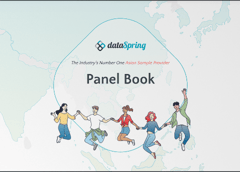
dataSpring Korea, a leading market research firm, recently released key findings from its survey on "People's Perceptions and Experiences on Declining Birthrate and Related Policies." Conducted over 16 days between August 28 and September 12, 2024, the survey sheds light on the attitudes of 1,116 respondents aged 25–49 across South Korea. The participants included married individuals with children under six years old and unmarried men and women, offering valuable insights into societal perspectives on marriage, childbirth, and the effectiveness of government policies addressing the declining birthrate.
Key Findings from the Study
1. Marriage and Parenthood: A Choice, Not a Necessity
- Only 49.8% of unmarried respondents expressed intentions to marry. The willingness to marry significantly decreases among individuals aged 35 and older.
- Among those intending to marry, only 50.8% plan to have children, reflecting a significant shift in societal norms.
- Gender disparities are stark: 39% of women expressed a desire to have children compared to 61.7% of men, likely influenced by the heavier childcare burden often borne by women.
2. Parenthood Motivated by Personal Fulfillment
The reasons for having children are shifting from traditional values to personal happiness:
- 69% cited forming a family as a primary motivation.
- 13.5% linked having children to psychological stability.
Traditional reasons like leaving offspring (5%), filial piety (2.7%), and contributing to society (0.8%) are losing relevance. These motivations align with respondents' broader life priorities, which emphasize health, happiness, and family.
3. Limited Role of Policies in Childbearing Decisions
Economic conditions (23%), mental stability (14.7%), social pressure from family (29.4%) and friends/acquaintances (6%) are key factors influencing decisions to have children. Interestingly:
- Only 2.3% of respondents cited government policies as a motivating factor.
- This underscores a disconnect between the perceived usefulness of birthrate policies and their intended impact.
4. Low Birthrate Awareness vs. Policy Familiarity
While 84% of respondents view low birthrates as a serious issue and only 65% draw people’s attention, a surprising 77% admitted unfamiliarity with existing policies even though their interest was high at 70%. The data highlights notable disparities:
- High-income respondents were more aware of birthrate policies compared to those in lower-income brackets.
- Low-income respondents displayed higher indifference to childbirth policies, with 29.3% stating disinterest, compared to 18% in the high-income group.
- Women, already less inclined to have children, exhibited greater disinterest in policies, with 30.4% expressing indifference.

Policy Feedback and Recommendations
The evaluation of current birthrate policies was tepid, with only 50.3% rating them as helpful. Those who had direct experience with these policies reported more positive evaluations, suggesting a potential gap between awareness and access. Respondents proposed several strategies to improve the effectiveness of birthrate policies:
- Expand financial support.
- Relax eligibility criteria for policy beneficiaries.
- Ensure workplace enforcement of existing rights.
- Raise public awareness about the availability and benefits of policies.
Addressing the Low Birthrate Crisis
The findings highlight an urgent need for a multifaceted approach to addressing South Korea’s declining birthrate. Promoting and accessibility of existing policies must be prioritized, particularly for women and lower-income groups. Simultaneously, societal attitudes towards parenthood and childcare responsibilities need to shift to reduce gender disparities.
Policymakers must strive to balance short-term solutions, like financial incentives, with long-term strategies to foster a more supportive environment for families. This includes improving work-life balance, addressing societal pressures, and promoting gender equity in parenting roles.
By aligning policy initiatives with the values and concerns highlighted in this study, South Korea can take meaningful steps toward mitigating the low birthrate crisis while enhancing the quality of life for future generations.
Stay informed on South Korea’s evolving societal trends. Dive deeper into the challenges, perceptions, and policies shaping the nation. 🌏 Read From Roses to Self-Love: A Closer Look in the Shifting Perspective of Asian Consumers on Love Holidays and Singlehood and The Love Holidays of South Korea for more consumer trends in South Korea.


 Download Panel Book
Download Panel Book


